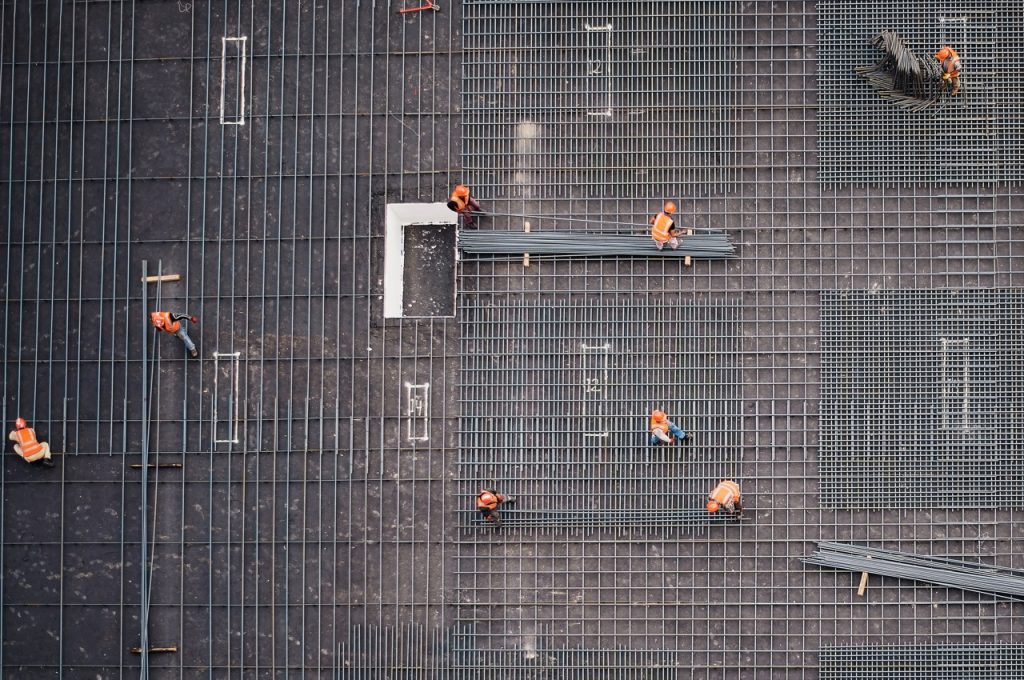Advancements in technology are having a bigger impact on the building and construction industry than ever before, impacting work site, professional development and home life. Online building and construction courses, in particular, are changing to focus more on how to prepare students for this changing landscape.
From the Internet of Things (IoT) to artificial intelligence (AI), technology is infiltrating the construction process across all stages of planning, design, and build. With 1.1 million Australians employed in the building and construction industry, this impact is significant.
The building and construction sector has, traditionally, a reputation for low productivity rates. This reputation can be pinned largely to common delays, cyclic demand and an industry failure to be agile and responsive enough in reaction to technological advances.
Times are changing, and technology presents welcome solutions to long-standing inefficiencies within the building and construction industry. This is why it’s becoming an integral feature of current building and construction certificates.
The impact of technology on the construction industry is huge and the benefits are felt by everyone, from online building and construction students through to end consumers.
Let’s take a closer look at exactly how technology is impacting day-to-day life for building and construction professionals.

Integrated Teams
Thanks to the increasing ownership of technology at an individual basis, we’re seeing a larger proportion of younger, more connected workers than ever before. It is becoming more common for tradies to complete their courses in building and construction online, thanks to the availability of technology.
As close to half of all full-time workers in this industry are under 34, they have a huge advantage when it comes to technology. Their pre-existing familiarity with software platforms on mobiles, tablets and desktops allows them to navigate new software quickly, an essential trait for a high-tech worksite.
With a worksite that is able to learn new technologies faster, not only is productivity higher but returns on investments are felt sooner. In turn, this allows more time to address logistical issues, reaffirm accountability and deliver work to a higher quality.
For example, project management software tools can allow individual teams to receive tailored reports and updates on their tasks as well as the project as a whole. This can then save time on meetings and flag any problems in the project pipeline that may not be otherwise noticed until it is too late to avoid them.

Faster Build Process
Modern technology in the industry has grown to impact every part of the build, particularly the efficiency of the pre-build stages.
Prefabricated homes and buildings are growing in popularity, especially as they provide eco-conscious buyers with cheaper options. The main reason for this is because they are partially constructed in warehouses, a controlled environment where precise cuts and amendments can be made without external factors impeding progress.
Not only does modern technology accelerate warehouse performance with increased precision of project pipelines, often the actual build can be undertaken within just a few weeks, if not less. Additionally, many repetitive and time-consuming tasks can be automated to free up staff for more complex projects.
In this new world, even robotics and 3D printing have a place, and these technologies can be used to help with the physical labour of building, therefore allowing more tradies to upskill into supervisory or managerial positions with online training.
What’s on the Horizon?
The IoT offers many things to the construction industry; there is the chance to improve low productivity through increasing integration, as well as allowing the industry to rethink how homes are lived in.
This means that homes will be constructed with increasingly integrated technology. Conveniences such as voice command are already becoming common staples with Google Home and Amazon’s Alexa products. However, there is also scope to maximize energy efficiency through the planned use of a home and how to build it accordingly.
All of these changes are happening fast, and it is integral that building and construction certificates keep up with, and start reflecting real-world integrated approached to project management through software.
An example of this is the Building Information Modelling (BIM). BIM is the digital mapping of every aspect of a build across its entire lifecycle. Its benefits are widespread, from increasing build efficiencies to enabling a more advanced level of design. However, companies are not making the most of this technology, likely due to the significant upfront investment.
Four years ago, only 45% of building and construction firms were using BIM, despite this technology having the potential to save up to 5% of the overall costs of a building project.
Another modern technology becoming a staple part of a job site is the drone. More construction companies are now adopting drones as a way to inspect and monitor sites that may be hard to access at a low cost. With the real-time bird’s eye view part of an everyday toolkit, projects now have a level of access and insight never before possible, with data easily sent to remote devices around the globe.
Contact us to find out more about our online courses, or to ask any questions about technology on the worksite.





